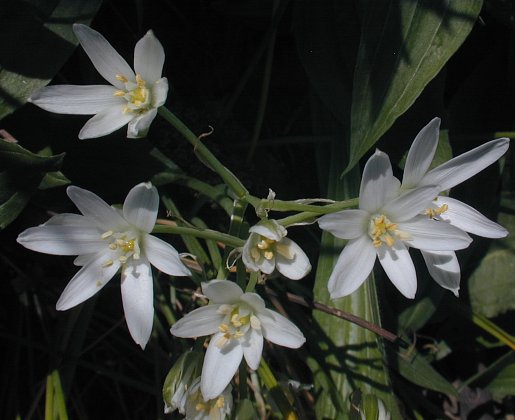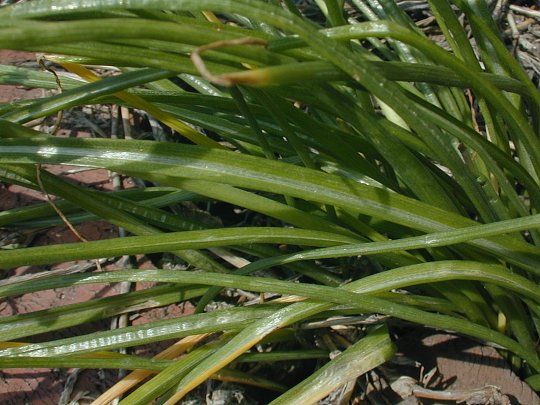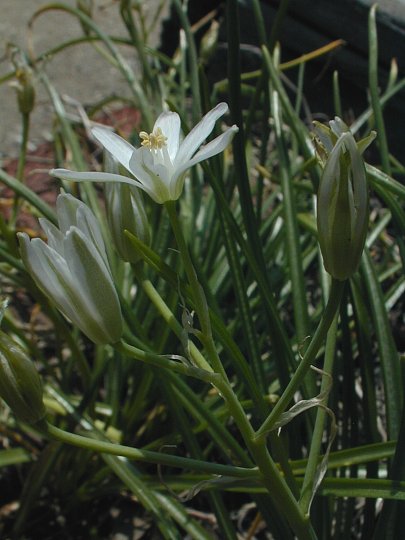TERRESTRIAL ORCHIDS (GROUND
ORCHIDS)
About
30,000 species of orchids come from all over the world, on every continent
except Antarctica. As you can imagine, they come from a wide range of habitats
and each type of orchid has different care requirements. Their incredible
diversity also means you can always find another interesting orchid type to
grow.
Most
orchids are epiphytes that grow on trees. Terrestrial orchids, or ground
orchids, obviously need somewhat different care! The main differences have to
do with the type of potting mix used. Most orchids from temperate regions are
terrestrial, but there are plenty from tropical areas too. Different orchid
types have different climate considerations, such as light, water, and
temperatures, so I won't address those here.
Most
ground orchids still don't grow in dirt! Bogs, leaf litter, and clumps of moss
are more common. So they should still have a freely draining, airy potting mix.
But it should have considerably smaller particles than you'd use for epiphytes.
A mixture of equal parts sand, sphagnum moss, and gravel or fine-grade fir bark
is a good starting point. Some plants like to be kept moist, while others come
from drier climates; adjust the water-retentiveness of the potting mix
accordingly. For example, Cypripediums come from bogs, and can tolerate a
somewhat denser mix, so recommend equal parts sand and peat.
Some
of these plants don't like their roots disturbed. For these, use potting mixes
that last a number of years before they break down! Inorganic components, such
as sand, gravel, perlite, and lava rock last practically forever. Peat also
lasts well, because it has preservative properties: long-dead people are
sometimes discovered sunk in peat bogs, undecayed!
As
with all orchids, the key to growing these is to reproduce their natural
habitats. Mimic the sorts of materials they'd be growing in naturally, and
they'll do well.
Spathoglottis plicata
This ground orchid is a native of
Southeastern Asia (Malaysia) to the
Philippines, is the common species of Orchid which blooms round the year. This
easily grown terrestrial herb has pretty, arching broad leaves with prominent
parallel veins and a few or large cluster of small flowers at the end of a long
stalk as tall as 1 metre arising from a basal leaf axil. The flowers are seen
from the more common purple to white, yellow, peach, pink and magenta shades.
and The leaves emerge from round pseudo bulbs that become increasingly multiple
and larger as the orchid matures. Ground orchids can be grown as potted plants
and also do well in beds and borders.
Spathoglottis,
including the Ground Orchid, Spathoglottis plicata, are terrestrial
orchids with showy, often purple, flowers. They are often included in
flower gardens in areas where temperatures stay above freezing.
The Spathplicata can flower from
June through September, these particular varieties have purple two toned
blooms. This means enough light in the winter and early spring to give
them enough stored energy to bloom. It is suggested to pot these orchids in clay pots, with about 2
inches of river stones on the bottom to increase air flow and drainage. This is
an important step, since most houseplants die from overwatering, not under watering.
Then mixed standard potting soil in with about 20% extra perlite, once again to
improve drainage and also to prevent compaction of the roots.
Although not very well known in India,
Spathoglottis plicata is the most common terrestrial (ground dwelling) orchid
in Singapore, where it is often used for landscaping.
There are two species of
spathoglottis in India (Assam) and Bhutan, and they belong to a group of over
40 species distributed from tropical Asia to Australia and the Pacific islands
Plant details
Common name:
Spathoglottis, or garden orchid
Botanic name: Spathoglottis plicata
Description:
Tropical terrestrial orchid. Softly textured, pleated leaves to 1m (3') long
emerge in February from egg-shaped pseudobulbs about 5cm (2") in diameter.
The flowers range in colour from white to purple and are borne on erect spikes
to 1m (3') tall. Flowers open a few at a time at the top of the stem and each
stem can last for months.
Best climate: The tropics, Assam, Western and Eastern Ghates and the north coast of
Western India.
Good points: Showy
white/mauve/purple flowers free flowering easy to grow
Care:
Spathoglottis can be grown in the garden or in containers with plenty of room
for the roots. They like a well-drained soil or potting mix, and need plenty of
moisture throughout the growing season.
Some information concerning this
plant:
a) Native plant of Malaysia
b) Common Name - Pleated Leaf Spathoglottis. These are locally known here as
palm orchid.(actually found out later as Ground Orchid). When they do not
flower, the leaves look exactly like palm leaves.
Planting conditions:
a) Over watering may cause fungal problem
b) Need evenly moist - do tolerate few days of dry period.
c) Well drain - deep pots may needed as roots go deep.
d) May need more nutrient compared to average plant.
Ground orchids are orchids which
grow in the soil, rather than in the air, like the epiphytic orchids with which many people are more familiar. A
number of orchid species grow in the ground, with
Bletilla striata
and Spathoglottis plicata
being two popular ornamental cultivars. People who are interested in growing these
orchids can find them at some nurseries and
garden supply stores, or they can order them from specialty growers.
These
plants produce pseudo bulbs from which the leaves and flowers develop. The
leaves tend to be spear-like and deep green, and can be quite long in some
species. The flowers emerge in a cluster on a long stalk, and they may be
purple, white, yellow, or variegated, with some cultivars coming in more exotic
shades. Most species are native to Southeast Asia, with Borneo being a region
which is particularly famous for its ground orchids.
Like
other orchids, ground
orchids have evolved to prefer the environment of
the tropical and subtropical rainforest. They prefer damp, humid conditions
which reflect their natural environment, and they like to be grown in partial
shade. Full sun is too intense for these orchids.
These orchids are less fussy about having wet
roots than orchids which have developed to grow
in the air, but they can develop mold and mildew if they are allowed to stay
wet for too long.
Some
cultivars are very fragile, and will only grow well in warm areas or in
well-controlled greenhouses. Chinese ground orchids are famously hardy, with delicate flowers and
leaves which can be quite charming in the garden. People may also see ground orchids labeled as
yellow, purple, Bornean, or Philippine ground orchids in a nursery. Rather than relying on common
names, gardeners should find out about the scientific name of an orchid so that
they can get proper directions about its care.
In
addition to being grown outdoors in the garden, ground
orchids can also be cultivated indoors. They can
be less challenging to grow than epiphytic orchids
because they do not require a highly specialized planting mix and attentive
care. Like their canopy dwelling cousins, when ground
orchids are grown indoors, they should be kept
out of direct sunlight and provided with ample bright ambient light. If a house
is particularly dark, it may be necessary to use a grow light to coax ground orchids into
thriving.
Not surprisingly, ground orchids are
found growing in soil, unlike their tropical brethren that we are accustomed to
thinking as orchids, for example the genus Cattleya. The name "ground
orchid" itself is a misnomer, and even then the more technical term, terrestrial orchid,
is in part inaccurate. The reason why has to do with the substrates these
highly varied plants are found in naturally. Some are found in loamy
soils of forests, while others colonize old sand dunes.
Probably some of the best known
terrestrial orchids are in the genera Bletilla,
Cypripedium, and Orchis.
Many have gotten the name hardy orchid because some colorful flowered
species are found in temperate regions. Of course not all terrestrial
orchids are from temperate climates, in fact, they can be found as far north as
the Arctic Circle and all the way down to the very south end of Patagonia.
They live in any climate zone, from tropical to subarctic. Not
surprisingly, their cultural needs are equally as varied.
If your growing conditions are right,
you will find many others that too could be called easy - genera such as Dactylorihza and Pterostylis have
members that fall in that category. Many more are challenging - the vast
bulk of the popular genus Cyripedium,
many of the acidic bog species, and most of the tropical jewel orchids all need
more care and attendance to than a typical tropical orchid.
Others still defy cultivation
completely, at least under normal growing conditions - these would include all
of the chlorophyll lacking saprophytes, and yet others such as Cypripedium irapeanum.
A few pictures of Spathoglottis ground
orchid are appended belo:








